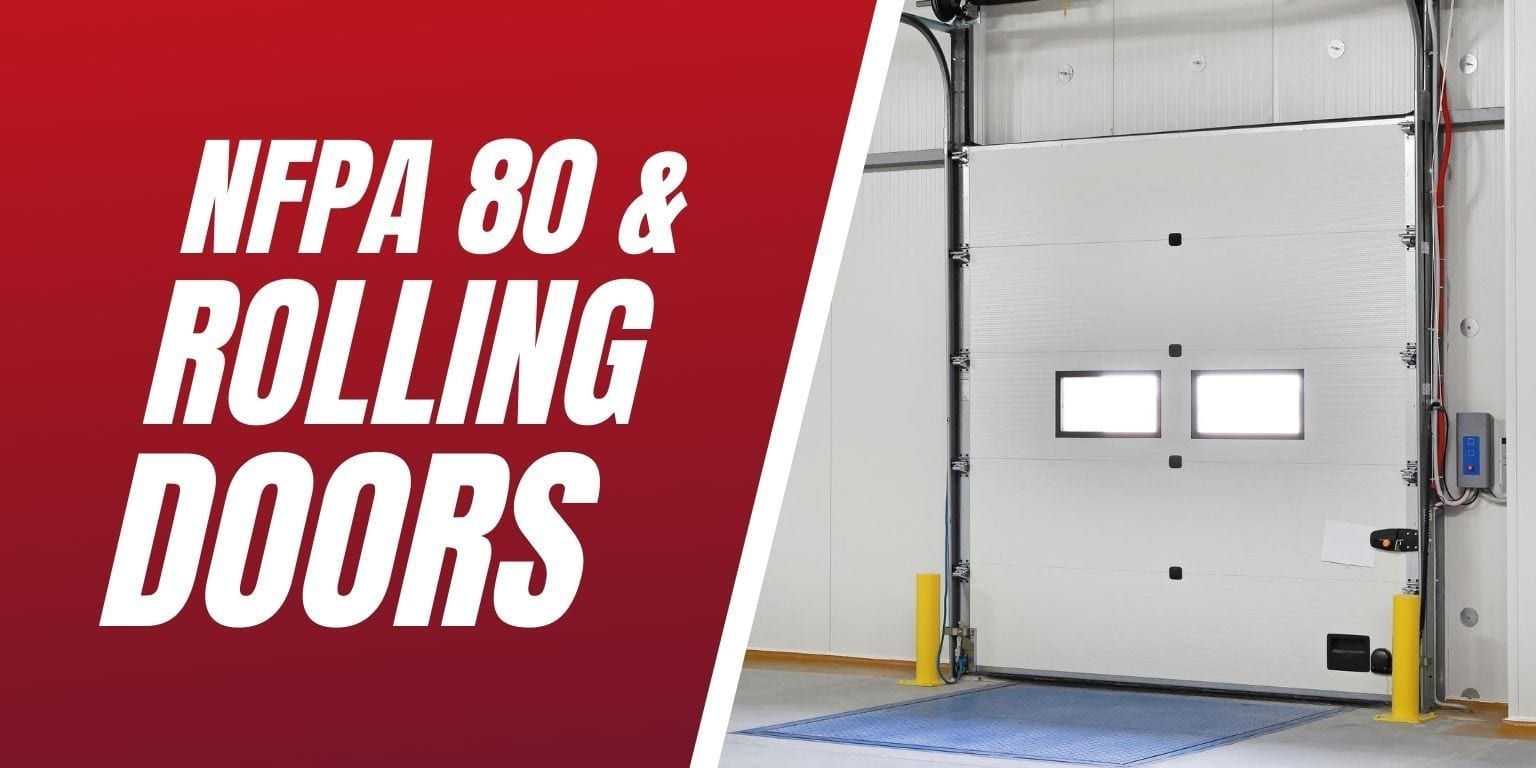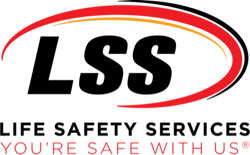
A building’s fire and life safety protection system is an important component of a building’s safety plan, regardless of whether it’s a commercial, healthcare, educational or industrial facility. Without a fire protection system, the lives of those who are inside the building are placed at a high risk in the event an emergency. That’s why passive fire protection systems have been designed to help protect the building and its occupants during a fire. An integral part of your building’s overall fire protection system are fire-rated doors, which include overhead & rolling doors!
An operating fire door is a key component to the compartmentalization of a building to help stop the spread of deadly fire, smoke and other toxic fumes. If the fire door assembly isn’t working properly, your facility is at risk, and that includes overhead & rolling doors. And as a building owner and facility manager, you have a lot to cover, not only with fire protection systems in general, but with fire doors! There is a lot to inspect and keep maintained, and you don’t want to overlook anything, especially overhead & rolling door inspections. In fact, according to the National Fire Protection Association standards (NFPA) 80 requires business owners and property managers to have their rolling and sliding fire doors inspected and tested at a minimum of once a year. Written documentation of these inspections and tests are to be kept for your local Authority Having Jurisdiction (AHJ).
Section 5.2.5 of NFPA 80-2010 requires horizontal sliding, vertical sliding or overhead rolling fire doors, the following must be verified:
- Labels are clearly visible and legible
- No open holes or breaks exist in surfaces of either the door or frame
- Slats, endlocks, bottom bar, guide assembly, curtain entry, hood, and flame baffle are correctly installed and intact for rolling steel fire doors
- Curtain, barrel, and guides are aligned, level, plumb, and true for rolling steel fire doors.
- Expansion clearance is maintained in accordance with the manufacturer’s listing.
- Drop release arms and weights are not blocked or wedged.
- Mounting and assembly bolts are intact and secured.
- Attachments to jambs are with bolts, expansion anchors, or as otherwise required by the listing.
- Smoke detectors, if equipped, are installed and operational.
- No parts are missing or broken.
- Fusible links, if equipped, are in the correct location: chain/cable, s-hooks, eyes, and so forth, are in good condition; the cable or chain is not kinked, pinched, twisted, or inflexible; and links are not painted or coated with dust or grease.
- Auxiliary hardware items that interfere or prohibit operation are not installed on the door or frame.
- No field modifications to the door assembly have been performed that void the label.
- Doors have an average closing speed of not less than 6 in./sec (152 mm/sec) or more than 24 in./sec (610 mm/sec)
An annual rolling fire door Inspection and drop test is required to ensure that your fire doors will close automatically in the case of a fire emergency. Some of the facilities where overhead rolling doors are most often found include:
- Industrial Facilities
- College & Universities (Physical Plants, Residence Hall delivery areas, etc.)
- Hospitals & Healthcare Facilities
- Commercial Office Buildings’ Loading Docks
- Pharmacies’ Rolling Service Doors
NFPA 80 publishes these guidelines to help ensure life safety and property protection. Some of the topics covered in the NFPA 80 are operability, door blockage, replacement, labeling and removal for rolling fire doors, fire shutters and fire protective openings.
So don’t overlook overhead & rolling door inspections and drop test as a part of your overall fire and life safety protection inspections! For more information about overhead & rolling door inspections, contact us here, or call us at 888-675-4519

